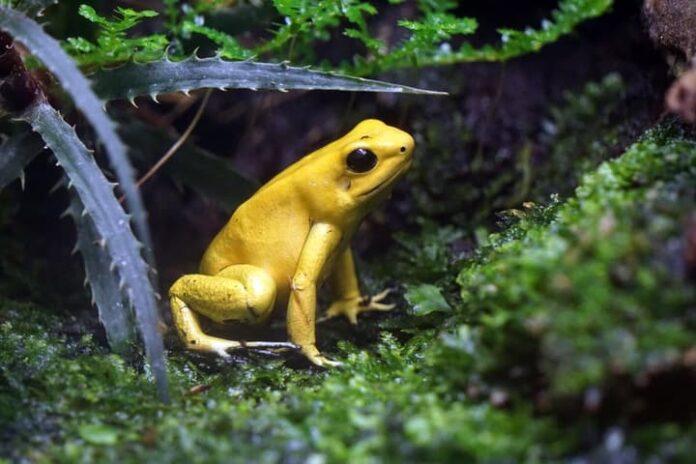Aposematism is one convenient way to say “I am dangerous, don’t get any closer.” to potential predators that are lurking around. The incredible thing about aposematic mechanism is that the predators avoid attacking the desirable yet unfavorable prey with certain appearances. So we are going to see some common animals with aposematic mechanisms that you might come across in the wild. There are 10 of them below, and make sure to admire their beauty from the distance.
1Blue-Ringed Octopus
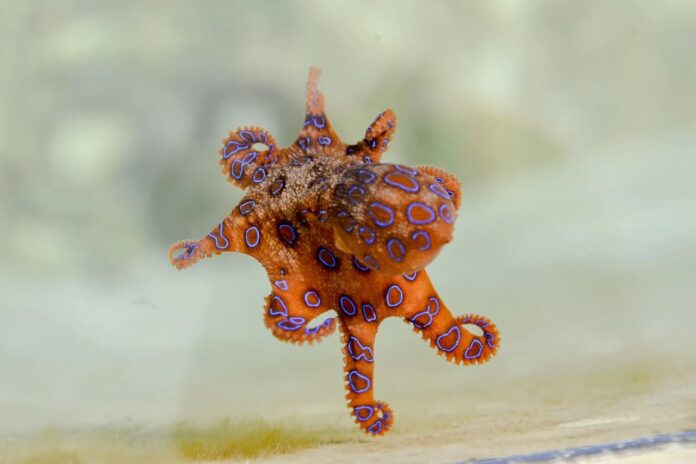
Looking cute and all, the blue-ringed octopus is actually one of the deadliest and most highly venomous animals in the world. This cephalopod has tetrodotoxin (TTX) in its venom that can cause neurotoxic effects (paralysis) and pain which is very potent. The blue rings on the octopus will brighten up when it feels threatened, and this is its aposematic mechanism. When provoked, it quickly changes color by becoming bright yellow while the rings get even brighter in blue color.
On top of that, it also combines aposematism with its startle behavior as well if the predators get too close. A blue-ringed octopus can flash its iridescent 50-60 blue rings at the rate of 3 flashes per second. As for the greater blue-ringed octopus, its rings contain multi-layer light reflectors known as iridophores. They reflect blue-green light in a wide viewing direction, indicating that they are not ideal for consumption.
Bites from a blue-ringed octopus are tiny and painless, so human victims rarely notice until the symptoms begin. The effects after envenomation are paralysis and respiratory depression, and there is no antivenom available for blue-ringed octopus venom.
2Burnet Moth
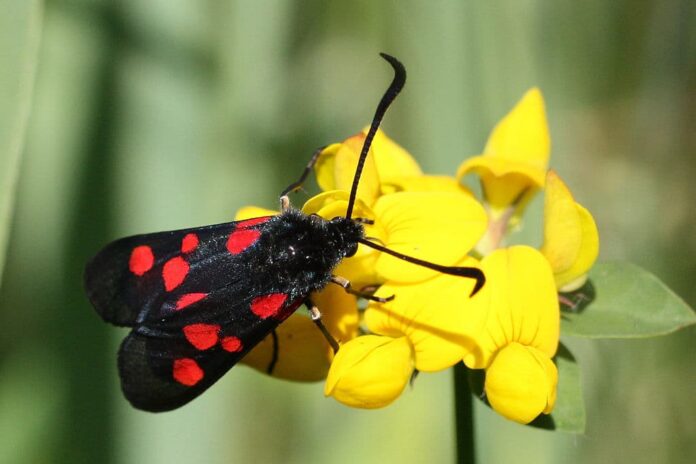
Burnet moth is a poisonous moth species that produce cyanide-based compounds that can kill predators. The problem is that the 6 bright red spots on its body often send mixed signals to predators. You probably also think that those markings are natural just like other regular bugs out there. However, the coloration of their bodies indicates different toxicity levels that they can produce. If the forewing markings are paler red and smaller, that means the moth has more cyanide which is common in females. As for the males, the brightness and size of their markings or wing color do not show their cyanide levels at all. The thing is that predators often avoid these moths, so aposematism actually works for them.
3Eastern Coral Snake
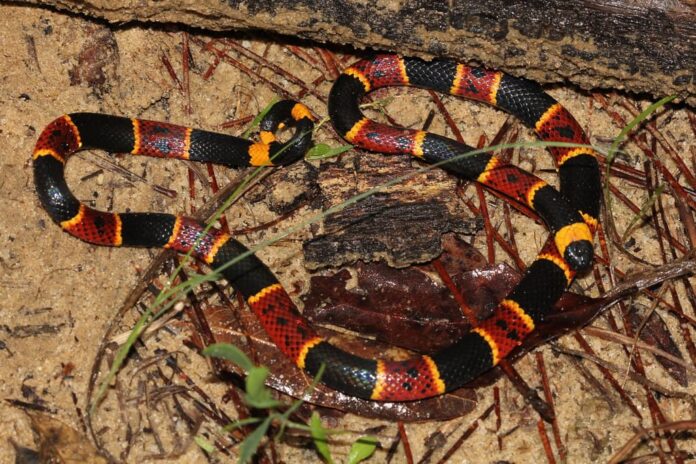
People often advise to avoid brightly colored snakes if you come across ones that you don’t know in the wild. While some colorful snakes are non-venomous, chances that you will cross paths with the highly venomous ones are also there. The best example of that is the eastern coral snake, the small and vibrant snake that is extremely venomous. This second-strongest-venom serpent can inflict serious bites due to the powerful neurotoxins that its venom contains. Its body displays a combination of black, red, and yellow patterns that is a part of aposematism in its trait.
The physical characteristics of snakes make sure that they are visible so that enemies can avoid them. Eastern coral snakes range from North Caroline to Florida and Texas, and they are the brightest of North American coral snakes. This venomous snake species live in forested or jungle areas, mostly in leaf piles, underground, or under rocks. Although deaths from coral snake bites are not common, the bites can be extremely painful. Without treatment, the venom can spread and lead to cardiac arrest.
4Eastern Newt
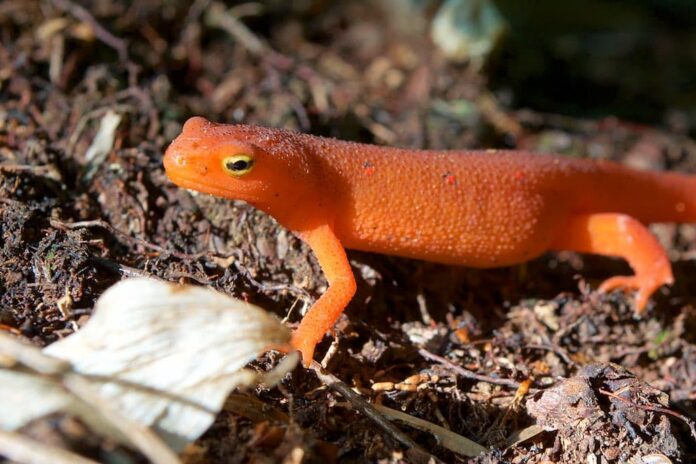
Goes by other names like red eft or red-spotted newt, the eastern newt has a bright orange color body with spots. That very bright orange color advertises their toxicity to predators as part of their aposematic mechanism. The skin of the eastern newts is toxic, but they have no negative effects on humans. However, you should not eat or handle them with broken skin although they are not very toxic to humans. The amount of toxicity is more dangerous to potential predators in the wild due to the whole consumption. So the unfortunate predators are the ones that ignore aposematism such as birds, carnivorous mammals, fish, and other amphibians.
5Flamboyant Cuttlefish
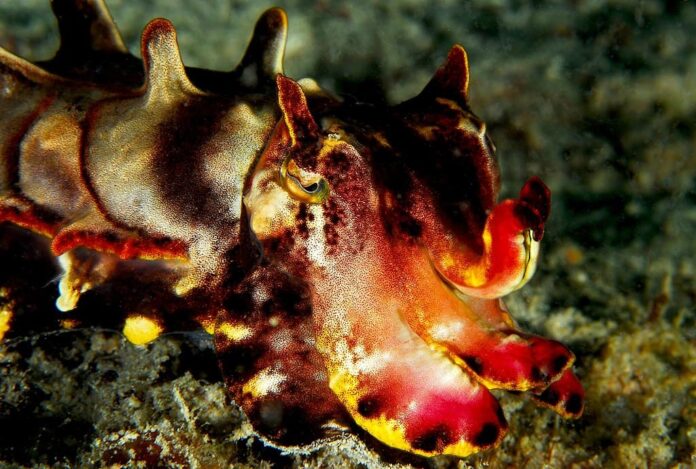
Here you are looking at the only poisonous cuttlefish in the world that can cause serious problems if eaten. While it is common for most cephalopods to have the ability to change colors, the flamboyant cuttlefish do so for aposematism purposes. The base color of this cephalopod is actually dark brown with overlaying patterns of white and yellow. As the master of color changing and camouflaging, flamboyant cuttlefish can quickly change their color to a number of patches. The flamboyant coloration is a form of warning to tell the predators that they are toxic. At the same time, they also use color changing as a part of communication, mating rituals, and prey catching as well.
Flamboyant cuttlefish are slow swimmers, and they cannot swim very long due to their small cuttlebone. Instead of swimming, they rather walk across the sea floor using their arms. As a part of their daily routine, these cuttlefish display their array of colors while confronting predators when they are walking. This warning often works, but there are also some hungry predators who ignore the signs sometimes like larger fish and seals.
6Harlequin Poison Frog
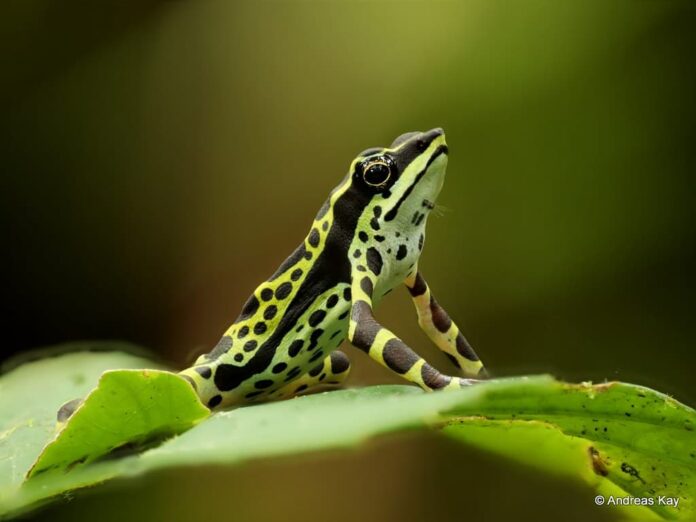
Poison dart frogs are very famous when it comes to aposematism, and harlequin poison frogs are a species of those. This frog species has a wide variety of color morphs, depending on where they live. However, the base color of harlequin poison frogs is bright orange with a webbing or black all over their bodies. Some color morphs of the base color are blue, dull orange, red, white, or yellow. There are also some others with a completely black body with just a few spots.
Harlequin poison frogs produce cardiotoxins known as histrionicotoxins, so a bite is all it takes to experience the toxins. However, their skin toxins can also be dangerous to humans by just handling them. The toxin can cause neurological harm upon contact or if mixed with the bloodstream. Before death, it can cause cramping, pain, and stiffness. Because of the high level of toxins, certain local native groups cover their weapons with the secretions from these frogs.
7Ladybug
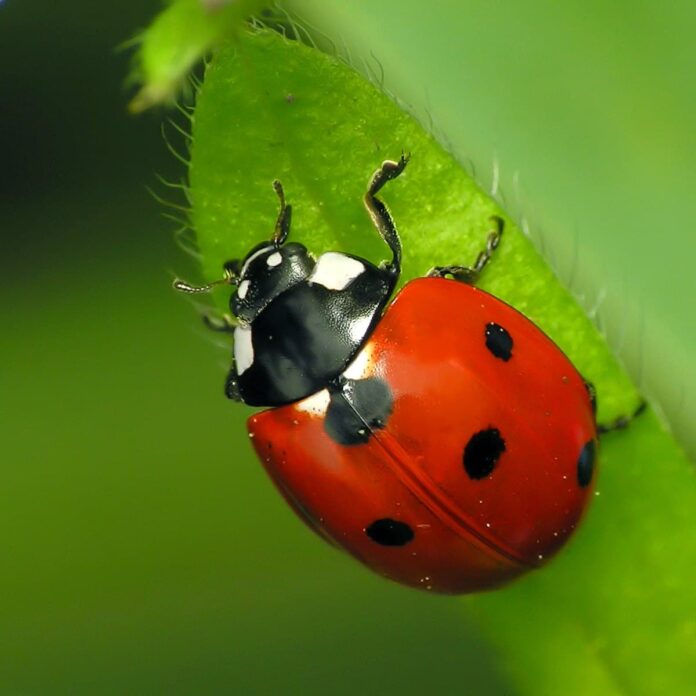
The adorable insects that we like as kids, the ladybugs, also practice aposematism through the coloration of their bodies. Ladybugs are not poisonous to humans, but they have toxic effects on predators like birds and lizards. When threatened, a ladybug secretes a fluid from its leg joints that has a foul odor to ward off predators. Should the predator consumes the bug, it either experiences an unpleasant meal or get sick from the toxins. Those who recover from the sickness remember not to eat a ladybug again. So the bright red color with seven black dots of the ladybugs provides clear information regarding the danger that they pose.
8Large Milkweed Bug
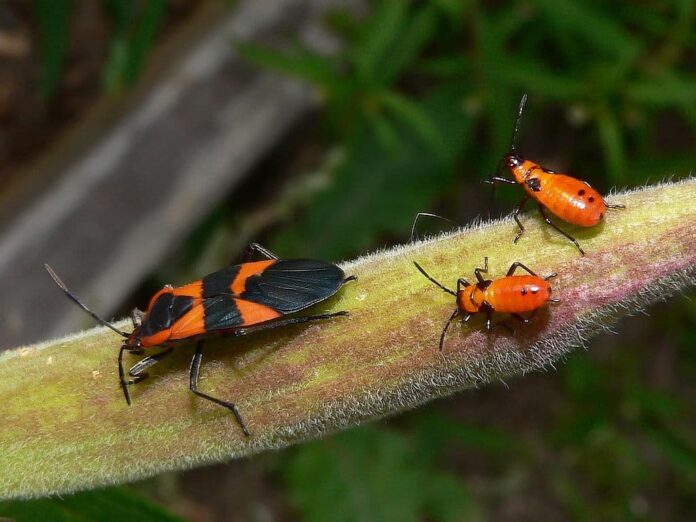
Adult large milkweed bugs have an orange/red body with a black X-shaped patterns on their wings. This striking color makes them so visible on the grass or leaves, and it also serves are an aposematic mechanism. Just like other animals on the list, this is also a form of aposematism to warn predators of their distastefulness. As a part of the defense mechanism, these bugs consume milkweed sap which is toxic to most predators. So whoever decides to eat them will experience bad taste or other unpleasant reactions.
Apart from their bad taste as prey, large milkweed bugs do not bite or sting at all. However, an infestation of these bugs can be annoying and troublesome. They feed on the seeds by piercing the seed pods, deforming the plants. Large milkweed bugs are there in all stages of growth on the plants from mid to late summer.
9Poison Dart Frog
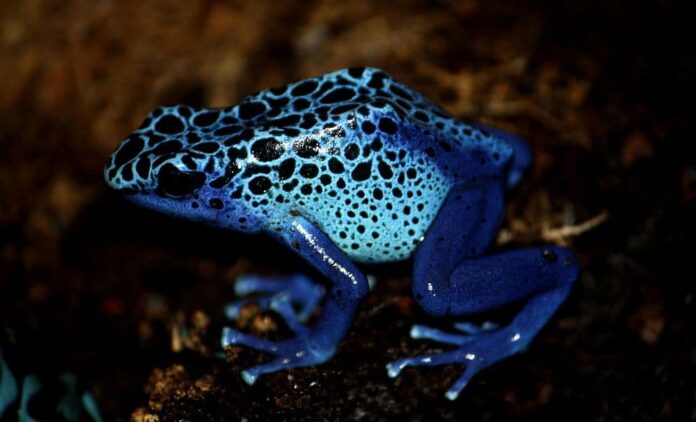
When it comes to aposematism, poison dart frogs have to be on the list. These extremely colorful frogs send a clear warning by the colors and spots on their bodies. The bright colors indicate the toxicity that they possess; hence being very dangerous to consume or even touch. Their bright coloration is associated with their levels of alkaloids and toxicity, so the brighter means the more dangerous.
Most poison dart frogs are not dangerous to humans, but some of them are lethal to touch. The golden poison dart frogs are one of the examples of colorful frogs that you should avoid. It may look small, but it contains enough poison to kill 10 grown men.
Fun Fact: Poison “dart” frogs got their middle name from the habit of the Native Americans who use their toxic secretions on their blow darts.
10Velvet Ant
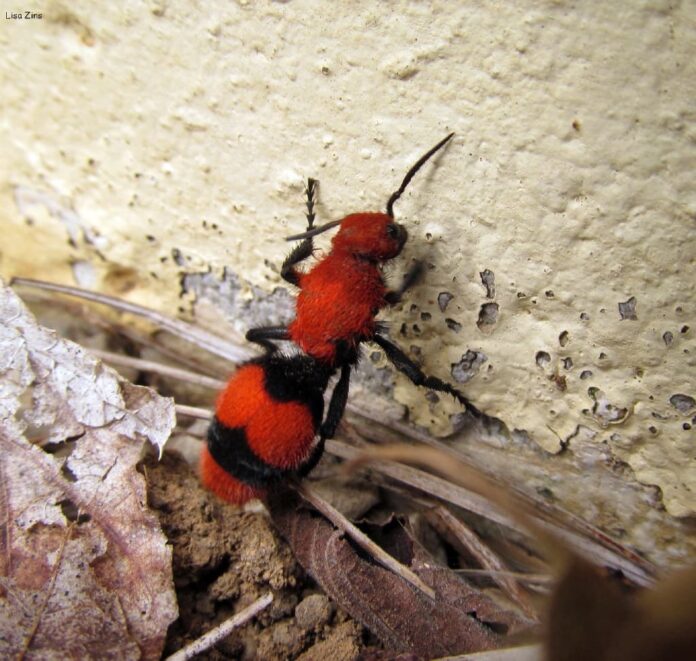
Velvet ants or cow killers are utterly dangerous insects that can produce an intensely painful venom that they inflict through stinging. While looking so attractive with the fuzzy appearance and coloration, velvet ants are actually wasps. The colors of velvet ants include black, gold, pale yellow, reddish-orange, silver, and white. All are strikingly vibrant colors that get your attention that also serve as a warning signal to keep your distance.
On top of that, velvet ants also have another method to ward off predators which is the noise. The auditory warning signal that these insects give is a loud squeak when harassed. This could also scare off some enemies by freaking them out so that they will go away. At the same time, a cow killer also tries to sting while letting out a loud squeak. Only female velvet ants have a stinger, and it is nearly half the length of its body, delivering excruciating pain.
Related Post: Dangerous Venomous Color Snakes

